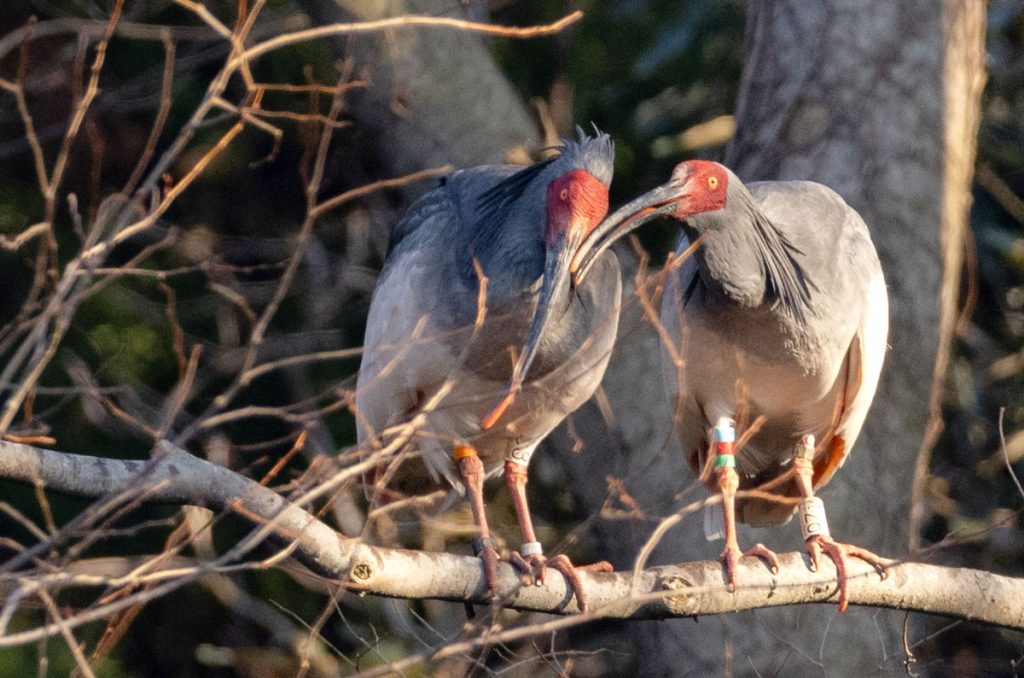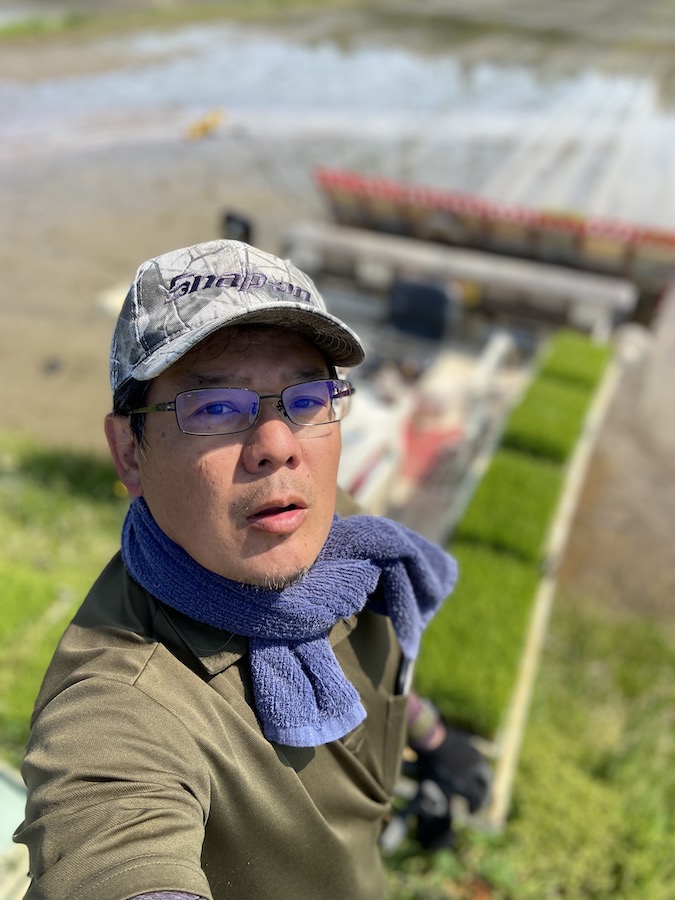
A crested ibis in flight carrying a twig to make its nest, photographed in 2023. (©Fumie Oyama)
Read the full story on Japan 2 Earth - Sado Wildlife in Focus | Is Overcrowding Responsible for the Recent Decline in Crested Ibis Numbers?
The mating season of the Japanese crested ibis, a once-extinct bird designated as a national treasure, has approached its final stage. Ibis couples can be seen busily preparing to build their nests.
Bird Couples Moving in Together
In my last essay, I explained the courtship behaviors of the crested ibis. The male, whose feathers have turned black, expresses affection by repeatedly offering small branches and dried leaves to a female of interest.

Once the birds form a couple and their affection grows through these behaviors, they begin searching for a nesting site that will become their new home.
First Observed Decline in Population
For someone like me who has been a constant observer of the crested ibis, a piece of recent news came as a shock. The Ministry of the Environment announced that as of December 2023, the number of crested ibises in the wild had decreased by 13 compared to the end of the previous year.
The current total stands at an estimated 532 birds. This marks the first decrease since the birds were first released back into the wild in 2008.
Continue reading the full story on Japan 2 Earth to learn more about potential reasons for the recent decline in the population of the endangered crested ibis.
And find more great articles on the environment and the challenges of achieving the SDGs on our affiliated website Japan 2 Earth (J2E), sparking a transition to a sustainable future.
RELATED:
- Ramsar Recognizes Decades-Long Effort to Protect Endangered Geese
- The Snow Fairy of Hokkaido is Winter's Sweetest Gift
- Protecting the Vulnerable Little Tern is No Simple Matter
(Read the article in Japanese.)
Author: Fumie Oyama
Click here to read more Sado Wildlife in Focus photo essays by photojournalist Fumie Oyama.

Fumie Oyama is a two-time winner of the Japan Newspaper Publishers & Editors Association Award as a photographer for the Sankei Shimbun. After covering the reintroduction of the crested ibis to the wild for 11 years, Oyama left the company in 2020 to move to Sado Island. There, he continues to photograph the ibis and other wildlife while engaging in farming. He currently promotes the charms of Sado Island as a photojournalist. Follow Fumie Oyama on Instagram.








